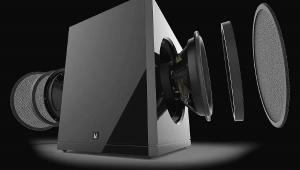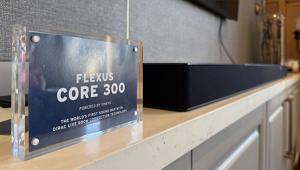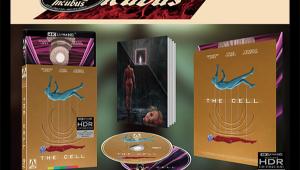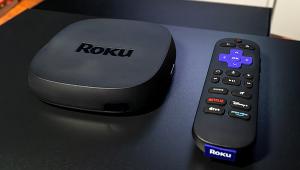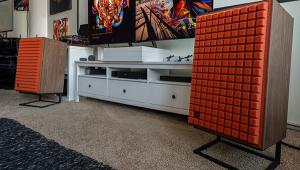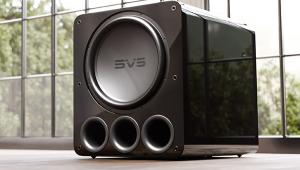Toshiba REGZA 46-Inch LED-Backlit LCD HDTV Page 3
TEST BENCH
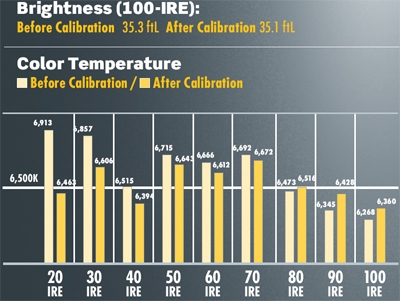
Color temperature (Movie mode/Color Temp. 2 preset, before/after calibration): Brightness (100-IRE window, before/after): 35.3/35.1 ftL Primary Color Point Accuracy vs. SMPTE HD Standard
| Color | Target X | Measured X | Target Y | Measured Y |
| Red | 0.64 | 0.64 | 0.33 | 0.32 |
| Green | 0.30 | 0.28 | 0.60 | 0.65 |
| Blue | 0.15 | 0.15 | 0.06 | 0.05 |
With the 46SV670U's Movie picture mode and color temperature 1 preset selected (the most accurate of the lot), grayscale tracking measured +/- 357 K of the 6,500-K standard from 30 to 100 IRE. Adjustments made in the Advanced Picture Settings' color temperature menu helped remove a bluesh bias at the lower end of the grayscale, improving the Toshiba's tracking to a very respectable +/- 172 K from 20 to 100 IRE.
The TV's color decoder displayed only a mild -5% green error. Measurements revealed a degree of green oversaturation; otherwise, both its primary and its secondary color points closely matched the SMPTE HD color specification. Using the Base Color Adjustment in the set's ColorMaster menu allowed me to correct for the green color decoding error without affecting the levels of the other color primaries.
Gamma with the set's slider adjustment set to its middle (default) point was 1.8 - a good deal shy of the 2.2 target. Overscan - the amount of picture area hidden behind the edges of the TV's screen - measured 0% for high-definition signals with the Native screen format selected and 4% when Full was active. The TV displayed 1080i- and 720p format test patterns at full resolution. A 480i (DVD) resolution test pattern showed full detail via the component-video input, although 1080i-format ones looked somewhat soft. Motion resolution tests showed that the 46SV670U could deliver about 900 lines when its ClearScan 240 mode was active.
Screen uniformity was very good with the set's DynaLight local dimming feature switched on. A slight amount of uneven backlight spotting could sometimes be seen on films with black letterboxed bars, but the effect of this was minor. The Toshiba's picture contrast noticeably faded about 15º off from the center axis, and looked washed out at 30-45º angles. Glare from the screen's coating was also a minor issue when the room lights were turned on, but mostly when watching dark movie and TV images.
Video processing and upconversion was very good. With its Standard Film Stabilization option active, the Toshiba passed the full suite of film and video resolution and jaggies tests on the HQV Blu-ray Disc, along with most tests save the Assorted Cadence chapter (which includes 2:2 pulldown tests) on the DVD version of the same. The MPEG NR and DNR noise-reduction modes had little effect on high-def signals at most settings, although the MPEG NR did introduce picture softening on standard-def ones.
- Log in or register to post comments










